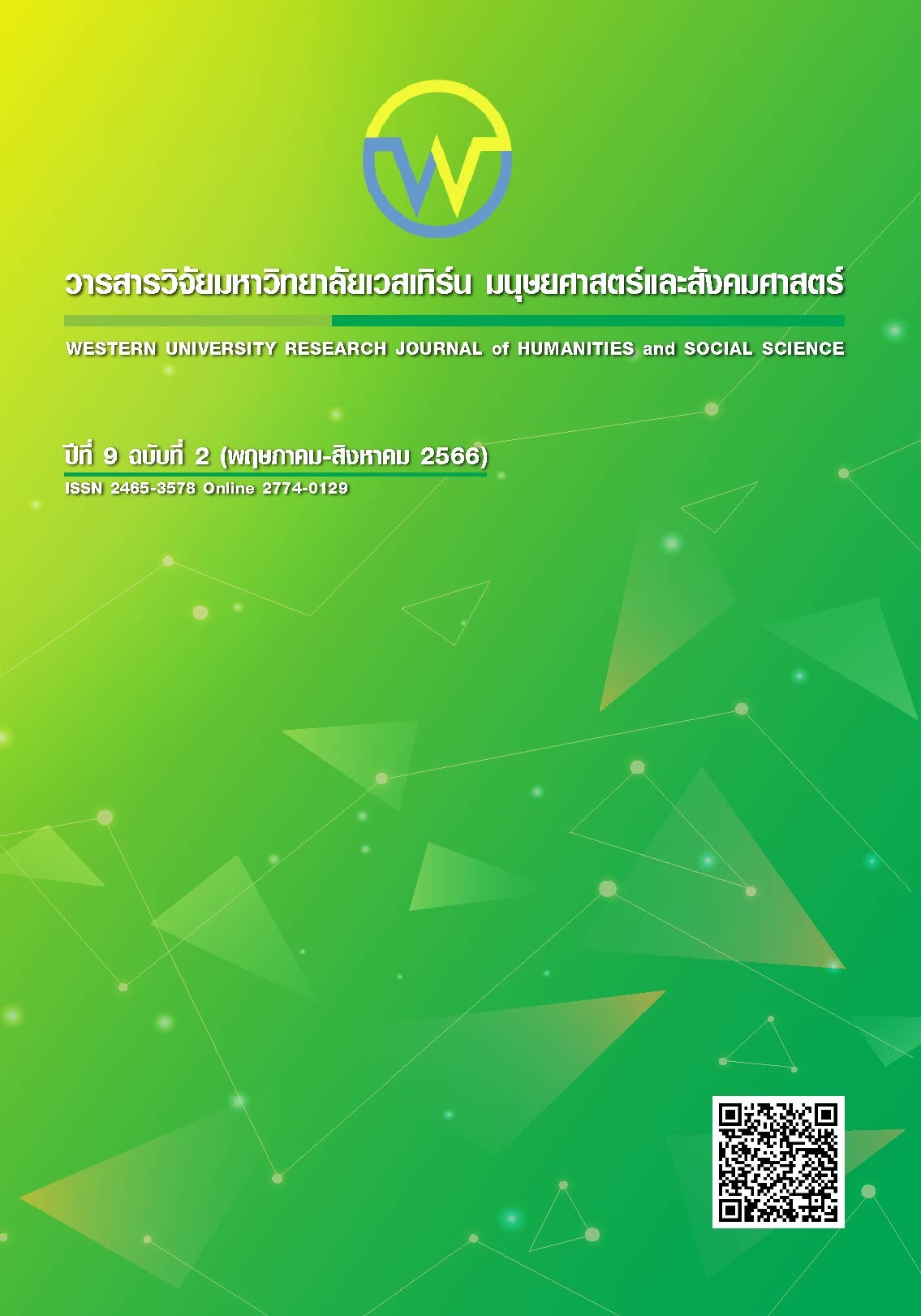ผลกระทบจากความผันผวนของอัตราแลกเปลี่ยนต่อเศรษฐกิจมหภาค : แนวคิดเชิงทฤษฎีและการทบทวนวรรณกรรม
Main Article Content
บทคัดย่อ
บทความนี้นำเสนอแนวคิดและทฤษฎีการกำหนดอัตราแลกเปลี่ยนเบื้องต้นและประเมินผลกระทบจากความผันผวนของอัตราแลกเปลี่ยนหรือการอ่อนค่าและการแข็งค่าของเงินบาทต่อเศรษฐกิจมหภาค โดยมุ่งเน้นวิเคราะห์ผลกระทบต่อดัชนีเศรษฐกิจมหภาคที่สำคัญ ได้แก่ การขยายตัวทางเศรษฐกิจ ดุลการค้า ดุลการชำระเงิน การลงทุนโดยตรงจากต่างประเทศ โดยอาศัยการสำรวจเอกสารที่เกี่ยวข้องทั้งหนังสือ บทความและรายงานการวิจัยในต่างประเทศ รวมทั้งนำเสนอบทสรุปจากการทบทวนวรรณกรรมต่างประเทศที่อาจมีประโยชน์ต่อการกำหนดนโยบายการบริหารเศรษฐกิจมหภาคของประเทศไทยในเบื้องต้น ผลการศึกษาพบว่าอัตราแลกเปลี่ยนของประเทศกำลังพัฒนามีความผันผวนเนื่องจากได้เปลี่ยนผ่านสู่การใช้ระบบการกำหนดอัตราแลกเปลี่ยนแบบลอยตัวแบบมีการจัดการ ซึ่งปัจจัยภายนอกประเทศมีอิทธิพลต่อการเปลี่ยนแปลงของระดับอัตราแลกเปลี่ยนมากขึ้น ความผันผวนของอัตราแลกเปลี่ยนส่งผลกระทบต่อการขยายตัวทางเศรษฐกิจ การค้าและการลงทุนระหว่างประเทศระดับความรุนแรงของผลกระทบขึ้นอยู่กับโครงสร้างเศรษฐกิจ รสนิยมการบริโภคของประชาชน ภาครัฐสามารถลดผลกระทบโดยการใช้นโยบายการเงินที่เหมาะสม การพัฒนาเพิ่มมูลค่าสินค้าส่งออก และการส่งเสริมผู้ส่งออกให้ใช้เครื่องมือทางการเงินระหว่างประเทศเพื่อลดความเสี่ยงจากอัตราแลกเปลี่ยน
Article Details

อนุญาตภายใต้เงื่อนไข Creative Commons Attribution-NonCommercial-NoDerivatives 4.0 International License.
เอกสารอ้างอิง
กฤตยา ตติรังสรรค์สุข. (2559). เศรษฐศาสตร์มหภาคเบื้องต้น. กรุงเทพฯ: สำนักพิมพ์จุฬาลงกรณ์.
ธนาคารแห่งประเทศไทย. (2566). สถิติอัตราแลกเปลี่ยน. สืบค้นเมื่อ 31 กรกฎาคม 2566, จาก https://www.bot.or.th/th/statistics/exchange-rate.html.
ดมิศา มุกด์มณี. (2563). เศรษฐศาสตร์การเงินระหว่างประเทศ ทฤษฎีและนโยบาย. กรุงเทพฯ:โครงการตำราคณะเศรษฐศาสตร์ มหาวิทยาลัยธรรมศาสตร์,
ไพฑูรย์ วิบูลชุติกุล. (2562). เศรษฐศาสตร์ การเงินระหว่างประเทศ. กรุงเทพฯ: สำนักพิมพ์จุฬาลงกรณ์.
อาชนันท์ เกาะไพบูลย์. (2561). เศรษฐศาสตร์ระหว่างประเทศเพื่อการพัฒนา. กรุงเทพฯ: โครงการตำราคณะเศรษฐศาสตร์ มหาวิทยาลัยธรรมศาสตร์.
Dollar, D. (1992). Outward-oriented developing economies really do grow more rapidly: evidence from 95 LDCs, 1976-1985. Economic development and cultural change, 40(3), 523-544.
Easterly, W. and S. Rebelo. (1993).Fiscal Policy and Economic Growth: An Empirical Investigation. Journal of Monetary Economics, 32(3), 417-458
Han Y., (2019). The impact of exchange rate fluctuation on economic growth –Empirical studies based on different countrie. Advances in Economics, Business and Management Research, 146.
Janus & Riera-Crihton. (2015). Real Exchange Rate Volatility, Economic Growth and the Euro.Journal of Economic Integration, 30(1),148-171
Karakostas, E..(2021). The Significance of the Exchange Rates: A Survey of the Literature. Modern Economy, 12 (11),
Kaur, T. A., Manual, V., Eeswarn, M.. (2019). The volatility of the Malaysian Ringgit ; Analyzing its impact on economic growth, International Journal of Recent Technology and Engineering (IJRTE), 7 (5).
Ramey, Garey, and Valerie A. Ramey, (1995). Cross-Country Evidence on the Link Between Volatility and Growth. American Economic Review, 85(5), 1138–51.
Ramey & Ramey. (1995). Cross Country Evidence on the Link between Volatility and Growth. American Economic Review, 85, 1138-1151.
Razin & Collin. (1997). Real Exchange Rate Misalignments and Growth. National Bureau of Economic Research.
Rodrik, D., (2008): “The Real Exchange Rate and Economic Growth,” Brookings Papers on Economic Activity, 2, 365–412.
Sauer & Bohara (2001) Exchange Rate Volatility and Exports: Regional Differences between Developing and Industrialized Countries. Review of International Economics, 9(1),133-52.
Schnabl, G. (2008). Exchange Rate Volatility and Growth in Small Open Economies at the EMU Periphery. Economic Systems, 32,70-91.
Utomo,F. G. R. and Saadah, S.. (2022). Exchange rate volatility and economic growth: Managed float and Free floating regime, Jurnal Keuangan dan Perbankan, 26(1),173-183.


